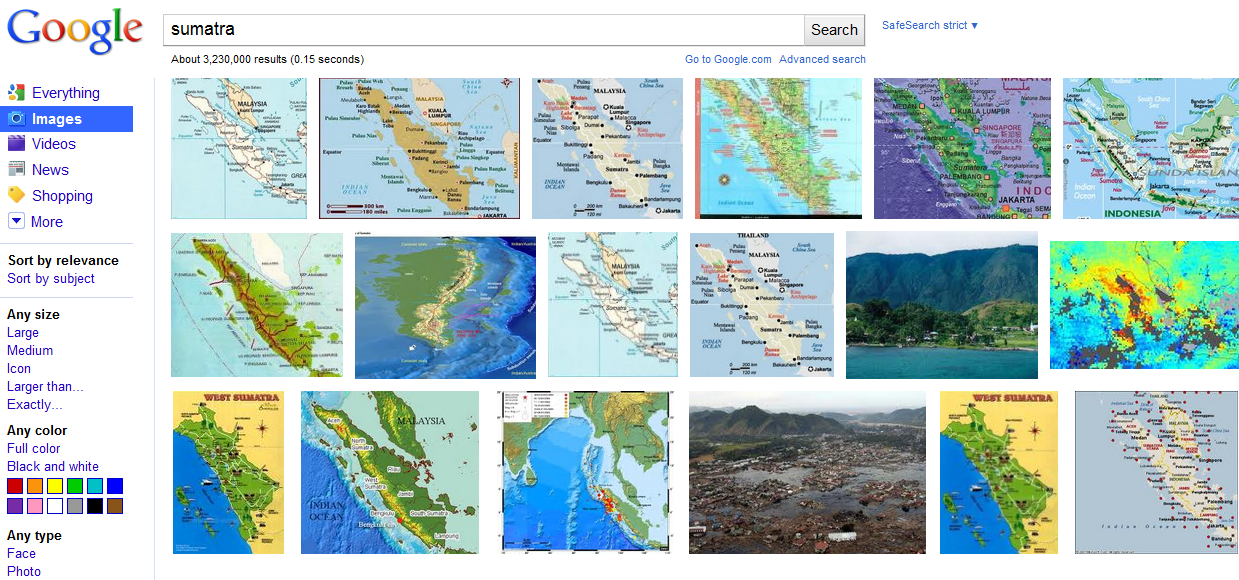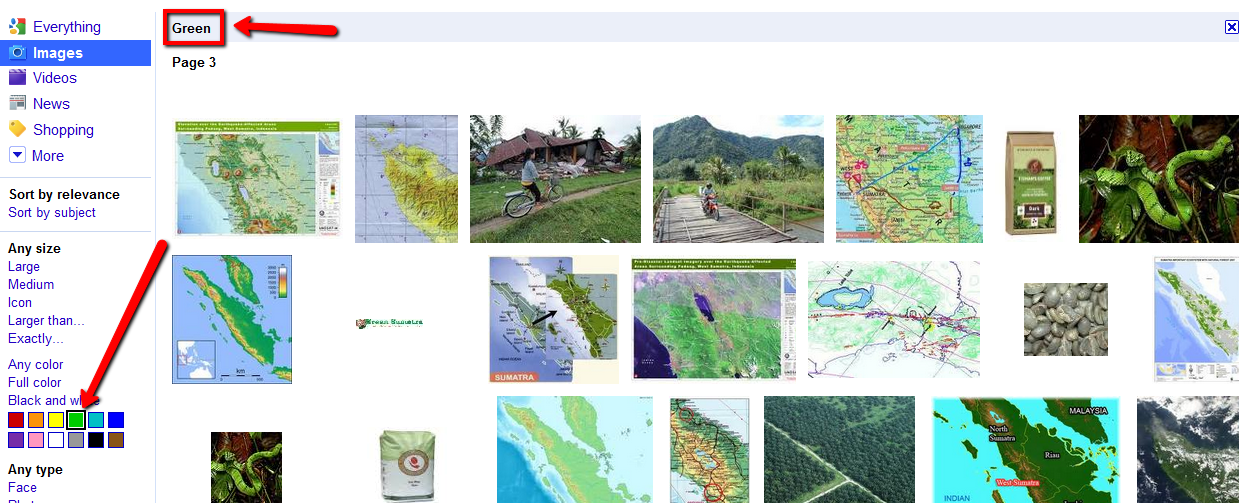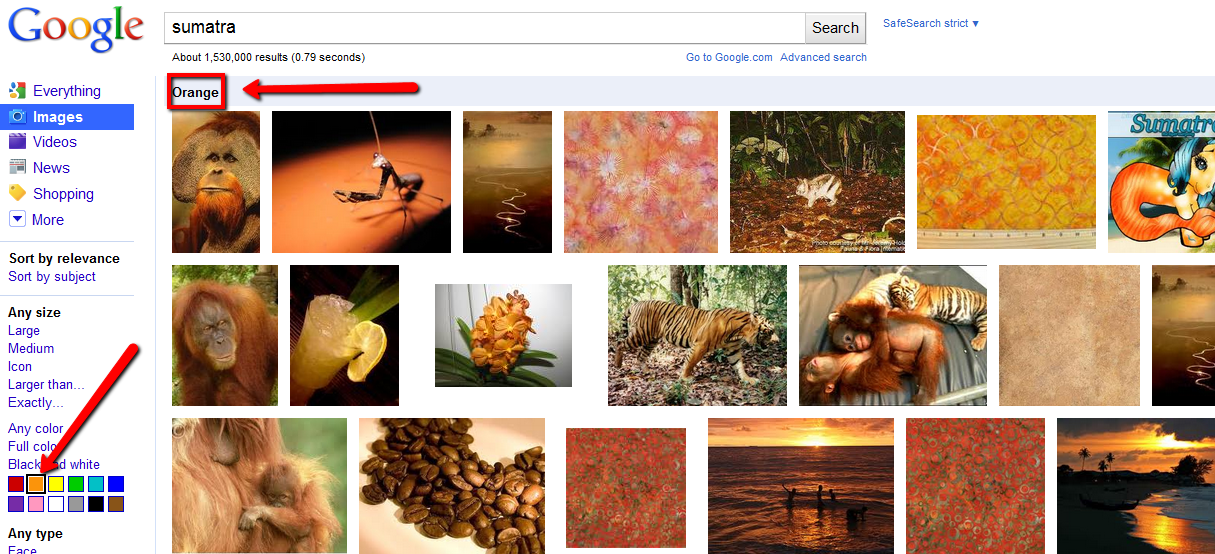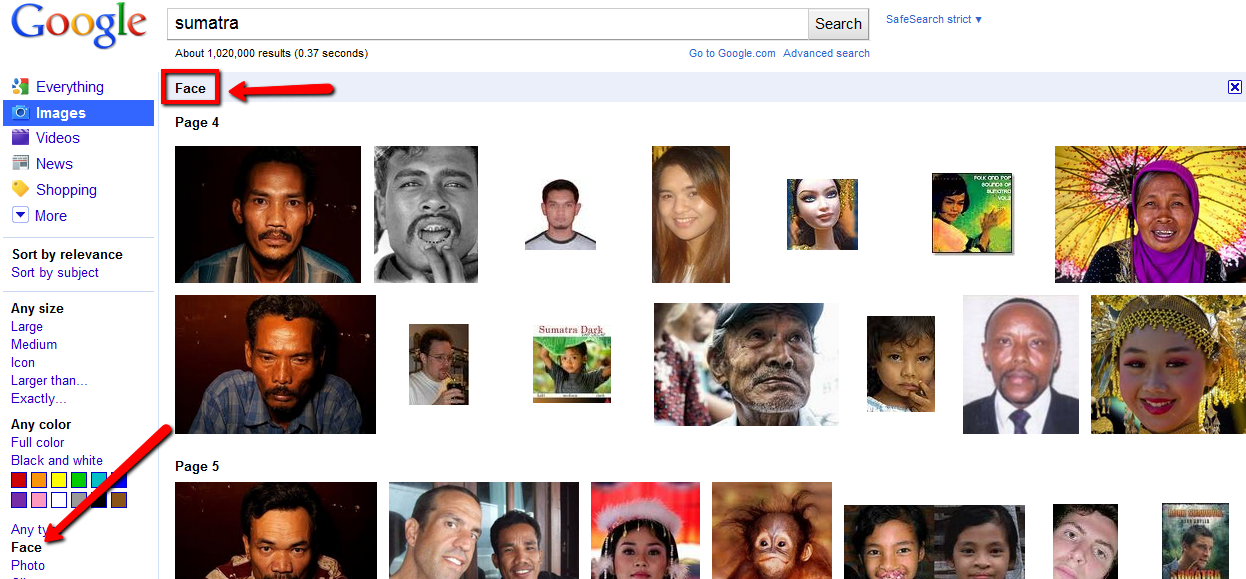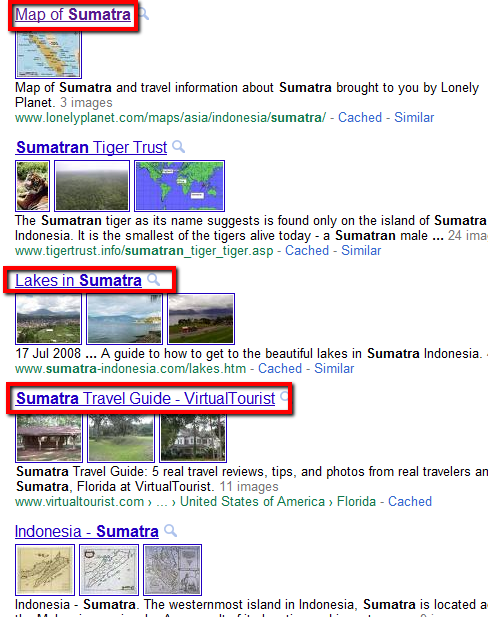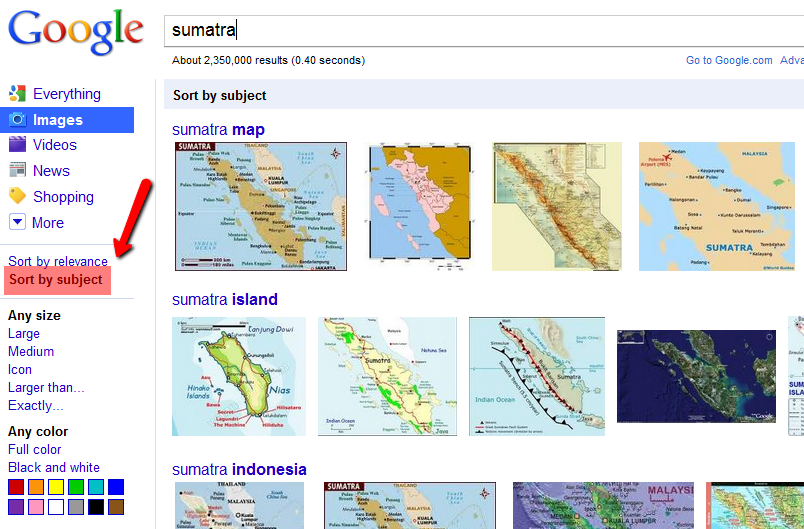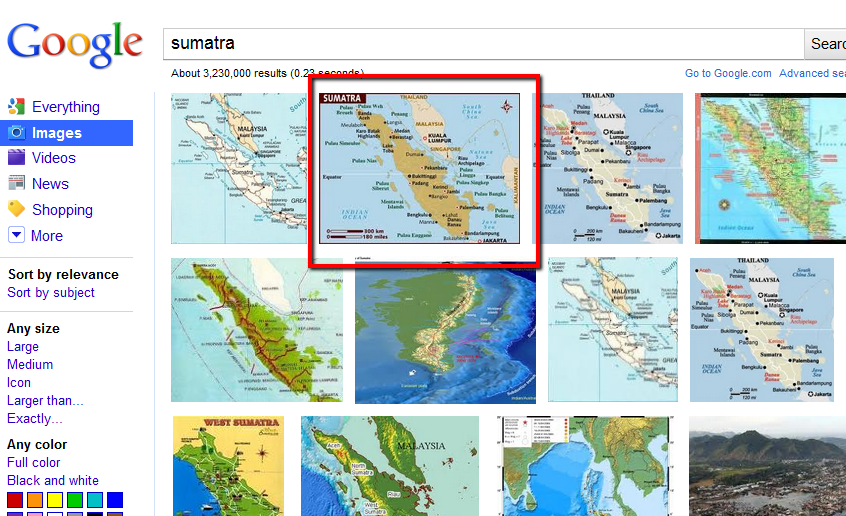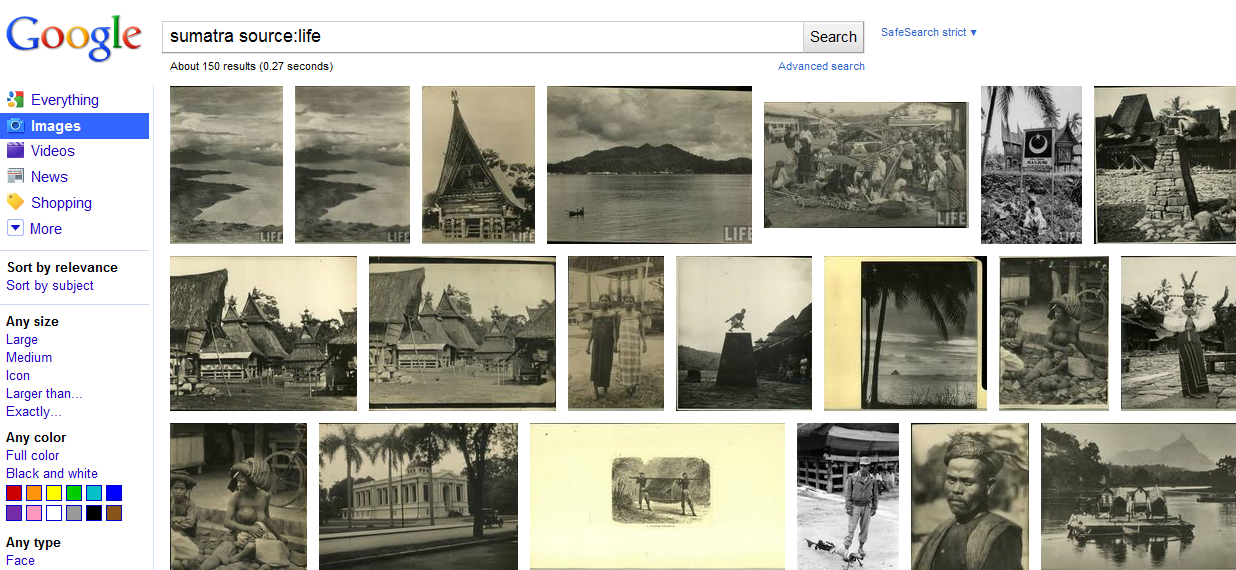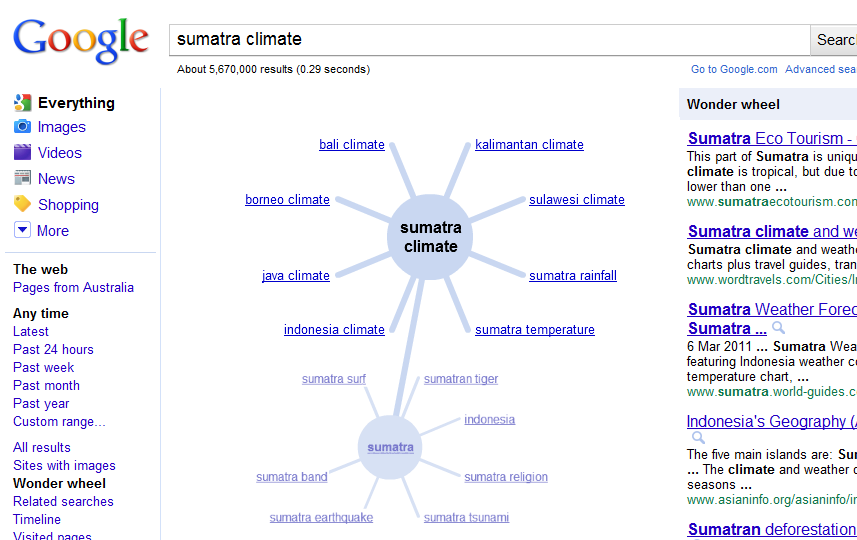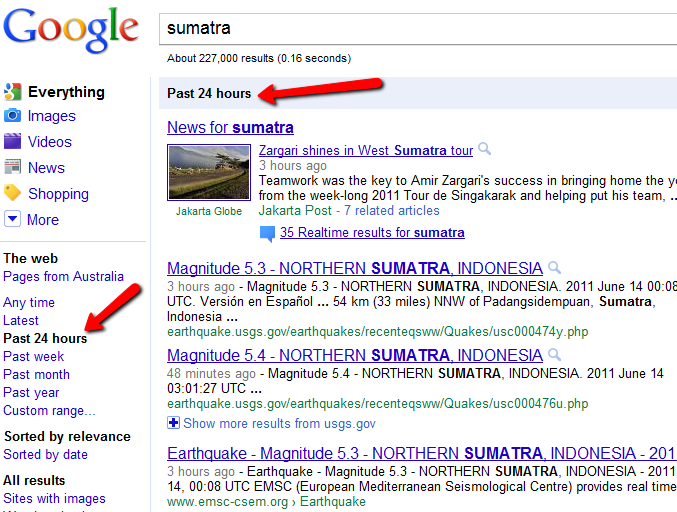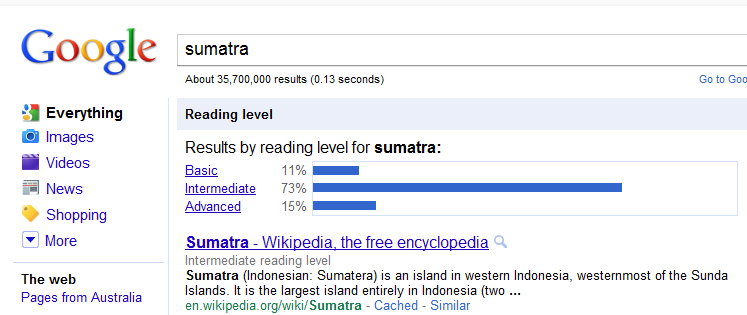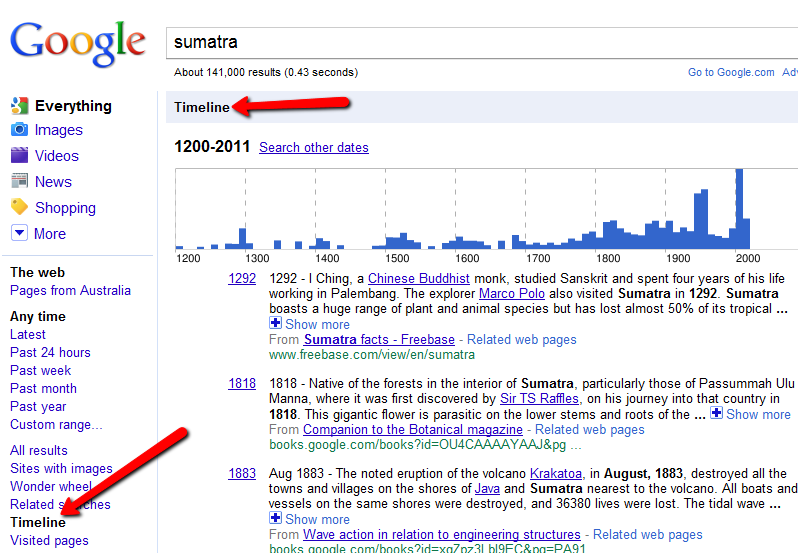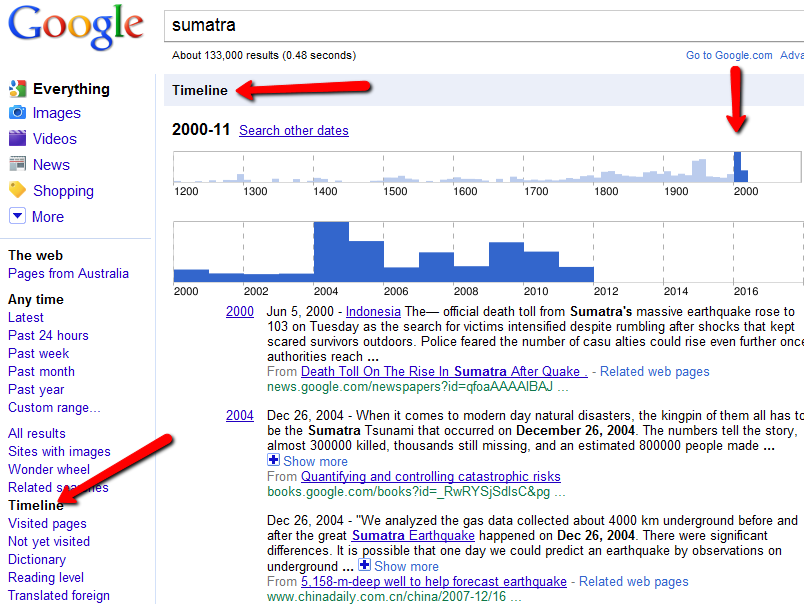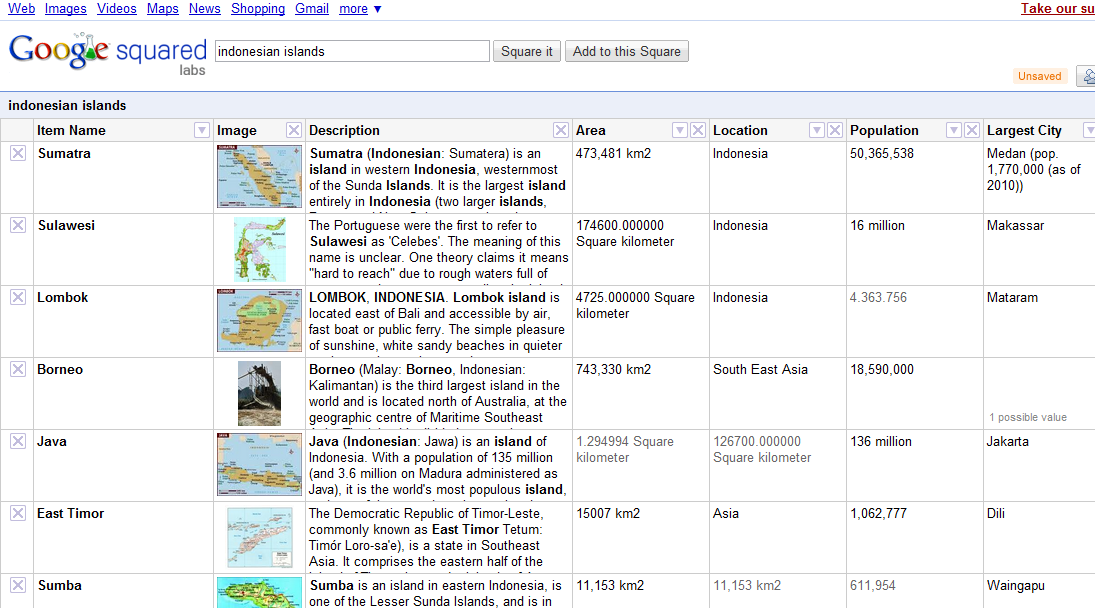This week I created a presentation for Yr 8 Indonesian students who were in the process of researching and collecting images for their Indonesian Island project. Most of them were creating a Photostory or similar in Video Studio, and this was a good opportunity for a Google Search show and tell. Although googling is something students do naturally and frequently, experience tells me that most wouldn’t have lingered on the search page long enough to check out the options in the left hand navigation.
I put this presentation together very quickly and used ‘Sumatra’ as the keyword demonstrating the different possibilities for website and image search. Here is the link.
The screenshots I included as examples of different searches made it clear that Google offers much more than the basic search. Compare what you would see if you did a basic Google image search (shown below)
I do feel somewhat torn between getting excited about undiscovered aspects of Google Image Search and the fact that the images are not searchable by Creative Commons licence. I wonder if Google would surrender to pressure and provide free-to-use images along with their search options. Judy O’Connell has written about this issue in her excellent post, Stop turning a blind eye! Media literacy in action.
So, although I still showed students the wonders of Google searching, I did introduce the issue of Copyright and ethical use of others’ information and images to the boys, and showed them Google’s Advanced Search using the ‘labeled for reuse’ option.

Although my conscience was barely appeased, I continued with the presentation, starting with the colour options. Green, for example, for ‘Sumatra’ –
Orange…
Here’s an opportunity to engage students in a discussion about why a certain search option would be helpful. Why would we want to use a ‘face’ search? Perhaps if we searched for a person whose name retrieved irrelevant results, then ‘face’ would push photos of people to the top. The ‘orange’ search pushed a whole new range of results which you might not have seen otherwise. In terms of colour design, this option is brilliant too. The black-and-white and photo options often retrieve older photos, so again, the results are different, possibly useful for a historical perspective. The line drawing option looks good for primary level.
One of the best image search options, in my opinion, is Google’s Sites with Images search. I’m sure students overlook this one, and it makes such a difference to the way you can use results. You have a clear window into which websites these images are coming from so you can evaluate the website before you click on the images. This is another important aspect of search which is worth teaching because it involves the thinking and evaluation process.
How much easier is it to sort through image results when they are categorised for you! Searching by subject is just as good –
And finding similar images couldn’t be easier – just hover over an image to find similar images or more sizes.
The LIFE photo archive hosted by Google is a wonderful collection of “newly-digitized images which includes photos and etchings produced and owned by LIFE dating all the way back to the 1750s. Only a very small percentage of these images have ever been published. The rest have been sitting in dusty archives in the form of negatives, slides, glass plates, etchings, and prints.” A fantastic opportunity to find images you wouldn’t normally see, and excellent for history.
At this point I left the Google Image Search and featured a few of my favourite Google search options, starting with Wonderwheel. For students who interpret results better when presented in a visual way (that includes me), Wonderwheel is the way to go. It’s the brainstorming search option, providing you with different aspects of the original keyword. You simply click through all the suggested keywords to get to the precise one you need.
Wonderwheel even reminds you of aspects you may have overlooked.
For latest news and current results Past 24 hours search is brilliant –
I also pointed out to students the Reading Level search option which divided results into Basic, Intermediate and Advanced. The basic search results shouldn’t be overlooked by secondary students. I explained to the class that if they wanted a quick overview of their topic, the basic search result was very useful.
One of the most impressive of the searches is Google Timeline Search. Here you get a graphic representation of results for your keyword over time. If you see a peaking of results in a particular year, your curiosity will have you clicking and drilling down until you have zoomed into the results for that period of time. So much fun.
Finally I took the students into the Google Labs where creative play turns to new and exciting options, and showed them Google Squared Labs.
For easy reading and overview of facts and figures, Google Squared Labs does a great job of presenting the information in spreadsheet style. Although I haven’t had success with all my searches, it’s definitely worth trying for factual results.
Finally, I showed the students a few of my favourite visual search options, including Tag Galaxy (which never fails to impress), Behold which finds free-to-use images, and Spell with Flickr for headings. Of course, there are so many more options for image search, even for Creative Commons images, and some of them are here.

